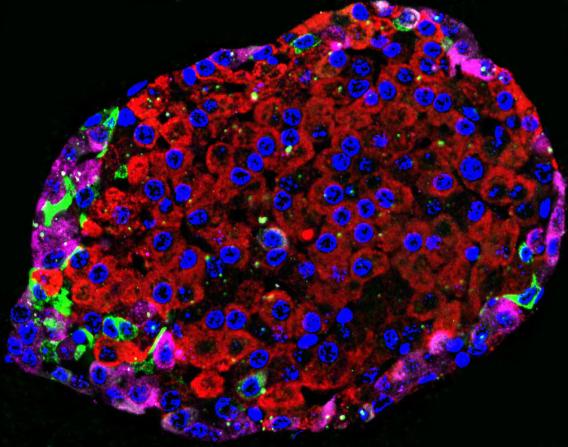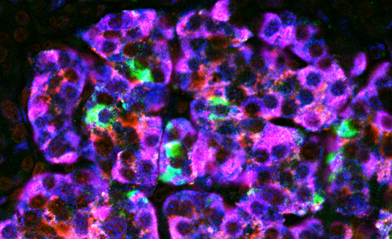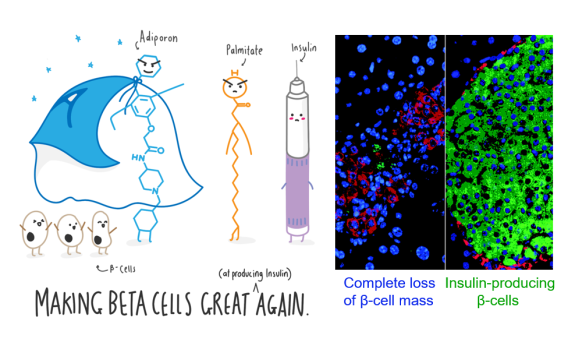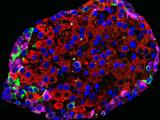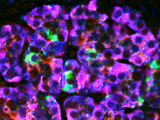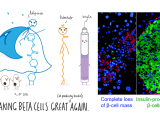Loss of pancreatic islet beta cells and/or impaired insulin secretion activity cause type 1 or type 2 diabetes - diseases that have been on the rise to reach epidemic level worldwide. We are developing innovative drug delivery platforms to enable targeted delivery of therapeutics or molecular imaging probes to pancreatic islet cells. To facilitate our translational and preclinical efforts in diabetes research and treatment, we are also interested in understating molecular mechanisms and pathways important for maintaining islet beta cell fitness and function (insulin secretion).
Targeted drug delivery to islet beta cells
The islet of Langerhans is a mini-organ scattered throughout the pancreas. Despite its essential role in releasing insulin and in maintaining glucose homeostasis, the combined mass of all islet cells is only ~2% of a pancreas. Therefore, beta cell targeted drug delivery technologies are crucial for enhancing the therapeutic efficacy and for improving the therapeutic index of molecules intended for protecting beta cells. We recently developed a fluorescent zinc granular indicator (ZIGIR) that displays a remarkable labeling efficiency of islet beta cells both in vitro and in vivo. Based on the structure and activity relationship study of ZIGIR, we defined a small molecular structure scaffold termed Beta cell Targeting Motif (BTM). Conjugating BTM with small molecule drugs enables selective and efficient accumulation of these BTM-drugs in beta cells, resulting in the prevention of diabetes in a type 1 diabetes mouse model (NOD mouse). We are extending BTM to prepare different drug conjugates to target beta cells in order to counteract cellular stresses (ER stress, oxidative stress, inflammation), to enhance beta cell robustness, and to maintain or restore their insulin secretion activity.
Islet biology and functional analysis of ZnT8
Understanding mechanisms and pathways important for maintaining beta cell fitness and function is important for identifying new therapeutic targets. ZnT8 (encoded by SLC30A8 gene) is a zinc transporter abundantly expressed in the islet beta cell, and is responsible for accumulating zinc ion into the insulin granule. Genome wide association studies have revealed that haploinsufficiency of SLC30A8 protects against type 2 diabetes, yet the underlying mechanism remains obscure. We are performing functional analysis of ZnT8 and investigating its biochemical and physiological roles in islet cells.
Molecular imaging and probe engineering
While multi-omics research is important for developing precision medicine or personalized medicine, molecular imaging provides spatiotemporal information of biomarker expression or cellular biochemistry in vivo in real time, revealing the activity of a specific biological process of an individual. Such information could be invaluable for studying the physiology of the individual and for designing and optimizing personalized medicine. We are developing both fluorescent and radioactive imaging probes for molecular imaging, focusing on biomarkers or processes unique to pancreatic islets.
